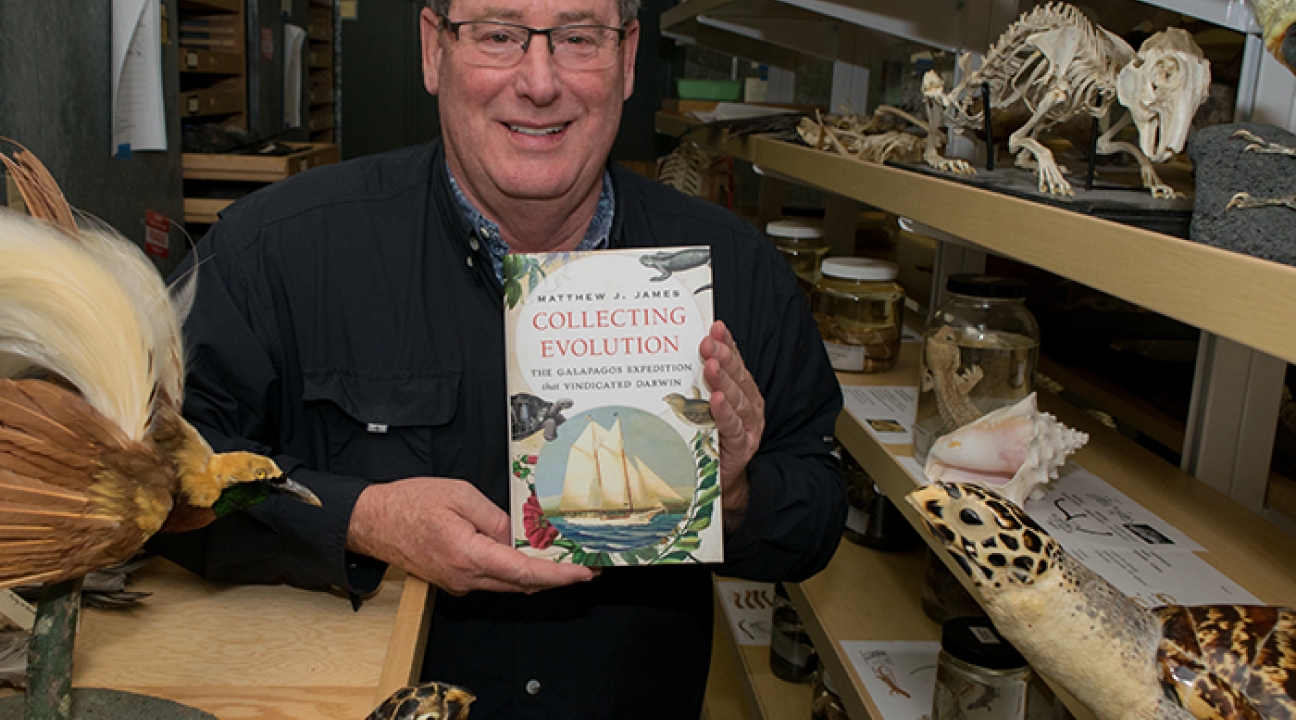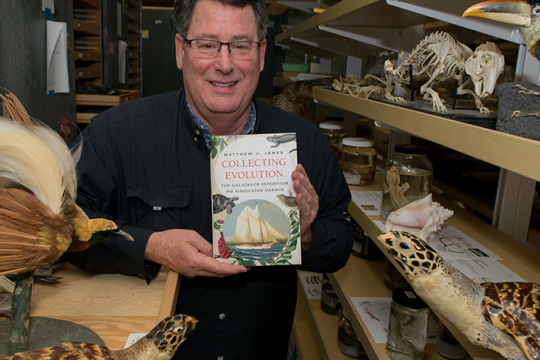Collecting Evolution
Professor Matthew James Details Cal Academy's Galapagos Expedition in New Book
A new book by Sonoma State University Professor Matthew James celebrates the brave pioneers from the California Academy of Sciences who validated Charles Darwin's theory of evolution -- and saved their institution -- in their 1905-06 expedition to the Galapagos Islands. "Collecting Evolution" (Oxford University Press) will be released on April 7.
"Most of what we know about the Galapagos came from this expedition," says James, chair of the Geology Department, who has taught at Sonoma State for 33 years.
Darwin's 1835 expedition proved invaluable to science and gave birth to the scientific notion of evolution, and the Cal Academy's follow-up voyage 70 years later brought a greater understanding of what was, at the time, still a new idea.
In 1905, eight scientists and three crew members from the California Academy of Sciences set out from San Francisco on an 89-foot schooner -- the same size ship as Darwin's "Beagle" -- for a scientific collection mission to the Galapagos Islands.
During their expedition, the Cal Academy burned to the ground after the 1906 earthquake, with only two wheelbarrows worth of specimens being saved. The team brought back more than 78,000 specimens, all of which are still in the Cal Academy's collection today.
"If it weren't for this expedition, the Cal Academy could have ceased to exist," says James, a Cal Academy Fellow.
Their collection of specimens, which includes 270 tortoises and 3,700 finches alone, laid the groundwork for foundational evolutionary texts like David Lack's "Darwin's Finches."
Another fact connecting the two expeditions: The ship, which was named "The Academy," is also the namesake of Academy Bay in the Galapagos Islands. The Charles Darwin Research Station in Academy Bay sees more than 200,000 visitors annually as one of the islands' top tourist destinations.
James first visited the Galapagos in 1982 as a grad student at UC Berkeley, and he's been fascinated by the archipelago and its history ever since. His book culminates 20 years of research and writing on the subject, during which time he spent countless hours at the Cal Academy poring over archives of the expedition, including original handwritten notes of the eight scientists on board.
As the President of the American Association for the Advancement of Science (AAAS) Pacific Division, James is organizing a three-day symposium about the Galapagos Islands at the association's annual meeting in Hawaii this summer. This will be the third time he's organized such an event for AAAS.
With millions of people expected to participate in the international march for science on April 22, James sees heightened relevance for this book. "This book is completely fact-based, both in what these men did and in my research for it," he says. "It celebrates the brave pioneers of what was at the time a new frontier of science -- evolution."
"Collecting Evolution: The Galapagos Expedition that Vindicated Darwin" will be available online and at bookstores, zoos, aquariums and, yes, the California Academy of Sciences. It will be also be available for purchase when James speaks at the Sonoma County Museum on March 30 at 5:30 p.m. Visit sonomacountymuseum.org for more information and to purchase tickets.
James will also be speaking about the book at the Smithsonian later this year, as well as the Natural History Museum in London and Darwin's alma mater, Christ's College at Cambridge University.



